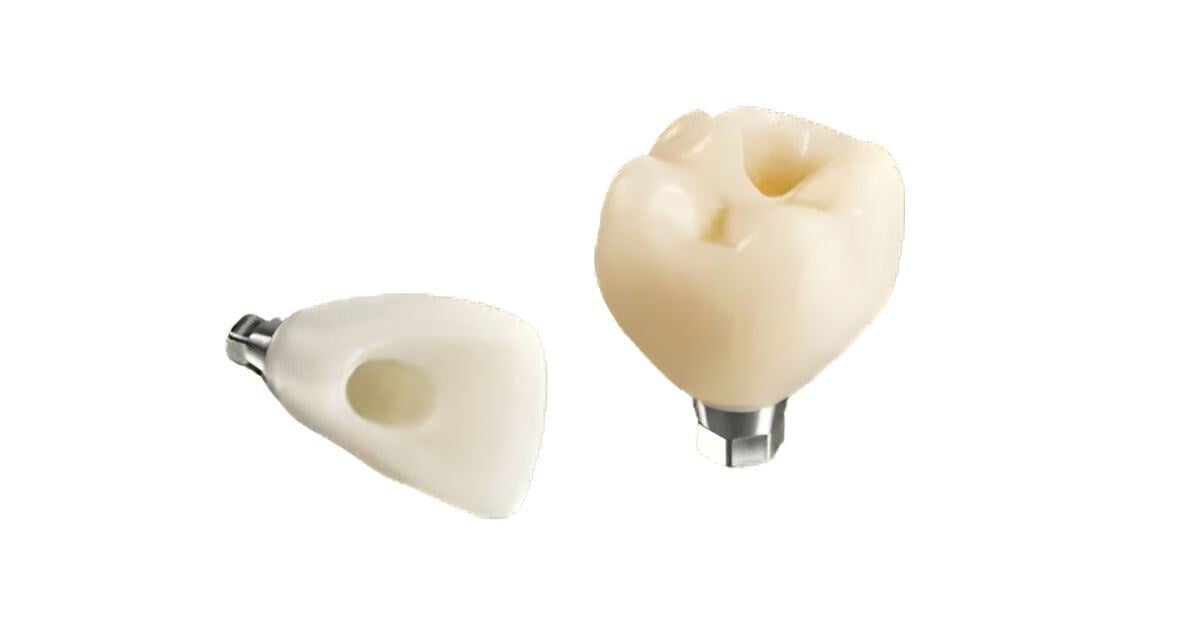You have a patient who needs a tooth replacement, and you know that dental implants would be the best solution for them. But how do you convince them of that?
Dental implants are a modern and highly effective solution for tooth loss, but many patients may be hesitant or unsure about the procedure. They may worry about things such as, "How long does it take?" "Is it painful?" or "Will it look natural?".
Your goal is to effectively communicate the benefits of dental implants and alleviate any concerns your patients may have so that they can make the right decision for their oral health. But explaining dental implants can be challenging with all the technical terminology and complexities involved. Here are some tips to help you clearly and effectively teach your patients about dental implants and their benefits.
Why Choose Dental Implants?
Start by explaining all the benefits dental implants have to offer. When your patient understands how dental implants can improve their oral health and enhance their quality of life, they'll be more likely to choose this treatment option.
1. Natural Look and Feel
One of the main concerns patients have about tooth replacement is whether it will look natural. With dental implants, you can assure your patients that their new teeth will look and feel just like their natural teeth. This is because implants are custom-made to match the color, shape, and size of their existing teeth and are placed in the jawbone to mimic the root of a natural tooth.
2. Durability and Long-Term Solution
Dental implants are a long-term solution for tooth loss. With proper care, they can last a lifetime, unlike other options, such as dentures or bridges, which require replacement every few years.
3. Prevention of Bone Loss
Dental implants can prevent bone loss in patients who have lost a tooth or multiple teeth. When a tooth is lost, the jawbone may start to weaken because it no longer receives stimulation from chewing. This can lead to a condition called bone resorption, where the bone gradually shrinks and weakens. Dental implants act as artificial tooth roots and stimulate the bone, which helps preserve its density and strength.
4. Improved Speech and Comfort
Tooth loss can affect more than just the appearance of a smile. It can also impact speech and comfort while eating or speaking. Dental implants provide a stable and secure foundation for replacement teeth so that patients can speak and eat without worry or discomfort.
These benefits show your patients that dental implants are a reliable, long-term solution for tooth loss and offer both aesthetic and functional advantages.

The Dental Implant Procedure: Step by Step
Patients may be more willing to commit to dental implants if they understand the procedure and what it entails. Take the time to explain each step in simple terms.
1. Initial Consultation
Before the procedure, you'll meet with your patient for an initial consultation. During this appointment, you'll assess their health and jawbone quality to determine if they're a good candidate for dental implants. This may involve taking x-rays. If the patient is a suitable candidate, you'll take impressions to send off to a dental lab, which will custom-make their implant.
2. The Implant Surgery
Implant surgery can take anywhere from one to two hours, depending on the number of implants you need to place. You'll begin by numbing the area and making an incision in the gum to expose the jawbone. Next, you'll drill a hole into the bone and insert the titanium post, which acts as an artificial tooth root. You'll then close the incision with stitches. After surgery, it usually takes three to six months for the implant to fuse with the jawbone through a process called osseointegration.
3. Attaching the Crown
After the healing period, the next step will be for you to attach the custom-made replacement tooth, also known as the crown, to the implant. You will work with your dental lab to custom fabricate the dental implant restoration, which includes the abutment and final crown. The abutment is a small connector post to the implant. You'll then place the crown onto the abutment and make any necessary adjustments for fit and comfort.
4. Aftercare
After the procedure, you'll provide your patient with aftercare instructions. This will likely involve keeping the area clean, avoiding hard or sticky foods, and attending regular check-ups. Your patients should follow these instructions closely; otherwise, they may experience complications that can affect the success of their implant or implant restoration.

Addressing Common Patient Concerns
Investing in implants is a big decision. Your patient will naturally have a few concerns and questions regarding the procedure. Address these queries by providing them with as much information as possible and explaining everything in a way that they can understand.
1. Pain and Recovery
Patients may worry about the pain and discomfort associated with implant surgery and recovery. Assure them that you will perform the procedure while they are under local anesthesia so that they won't feel any pain during the surgery. Afterward, they may experience some discomfort or swelling, though they can manage this with over-the-counter pain medication. Recovery time will vary for each patient, but most are able to return to their normal routine within a few days.
2. Longevity and Maintenance
How long can patients expect their dental implants to last, and how should they take care of them? These are common concerns you may hear. While dental implants can last a lifetime, patients need to understand that they'll still need to maintain good oral hygiene habits if they want to keep their implants in good condition. This includes brushing and flossing regularly, as well as attending regular dental check-ups and cleanings. You may also want to recommend using an antibacterial mouthwash to prevent potential infections.
3. Cost
Patients may worry about the cost of dental implants and whether they’re worth the investment. Be transparent with them about the costs involved, including any additional procedures or treatments that may be necessary.
You can also discuss payment options that may make the procedure more affordable, such as financing plans or dental insurance coverage. It's important to emphasize the value of investing in a long-term solution like dental implants compared to other temporary options, as this can help justify the cost.
How DDS Lab Can Help with Dental Implant Restoration Needs
Restoring a successful implant procedure requires the skilled expertise of both the dentist and the dental lab. At DDS Lab, we understand the importance of precision and quality when it comes to dental implant restorations. Our skilled technicians use state-of-the-art technology to create crowns that fit seamlessly with your patient's implant. We custom make each dental implant restoration for the best fit, function, and aesthetic for each patient.
As we work on your patient's case, we're always available to answer any questions and provide support throughout the process. Our goal is to help you provide your patients with the best possible care and outcomes. We can offer guidance on implant restoration options, materials, and techniques and even assist with digital impressions and digital imaging.
When you work with a reputable, reliable dental lab like DDS Lab, it becomes much easier to explain dental implants to your patients. You can confidently recommend this treatment option, knowing you have a trusted partner who can restore high-quality custom dental implants for your patients' unique needs. To learn more about how DDS Lab can support your practice with implant restoration cases, reach out to us today.
